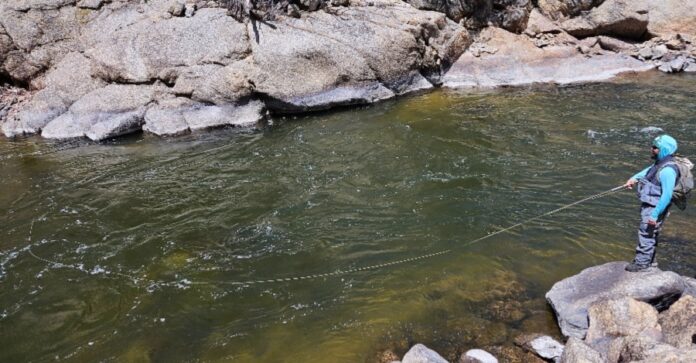All photos by Evan Jones
Most how-to articles about technical nymphing stress the importance of achieving a drag-free drift. Ensuring that your nymphs move at the same speed as the surrounding current is indeed good advice under most circumstances, but certain conditions can create exceptions to this rule. I recently had a day on a popular tailwater in Colorado where trout mostly ignored dead-drifted nymphs, but would rush to bite at the end of some drifts, as soon as the flies began to swing across the current. Given how effective this approach proved to be, I wanted to share some tips and observations from that day for when you encounter a similar situation.
See All Orvis Learning Center Fly Fishing Video Lessons
To swing a nymph rig, simply wait until the end of your drift when your flies are downstream. Hold your line tight, lower your rod tip, and allow the current to push on your line and swing your rig toward the near bank. This will cause the flies to rise toward the surface, which mimics emerging nymphs or pupae, often attracting trout that are keying on this specific stage of the hatch. While this isn’t a strategy you’ll need to employ very often, the swing can be an absolute game-changer when conditions push trout to focus on emergers.

The day in question was windy, with low, clear water and heavy fishing pressure, all of which contributed to trout shying away from feeding on the surface, despite decent hatches of both mayflies and caddisflies. We could see fish flashing and swirling under the surface, but they weren’t rising consistently enough to target with dries, wouldn’t commit to biting a streamer, and didn’t seem to react to dead-drifted nymphs under an indicator, confirming that they were looking for emergers. I caught a fish on the very first swing I tried, and another on the next one, even though I had been casting those same flies into that same run for a good five minutes prior. I’d say at least 75% of the trout I ended up catching that day were hooked during the swing, turning what could have been a frustrating day into a memorable one, and serving as a good reminder not to take any technique for granted, no matter how widely-touted, since there are exceptions to every rule.
Evan Jones is the assistant editor of the Orvis Fly Fishing blog.
Credit: Source link































